Have you got that image fixed in your mind? Great! Now revise it to picture, instead of a motorboat, a bowl-shaped bent willow boat covered with buffalo hide. Picture the people, not as whites, but as Indians - Mandan Indians, to be specific.

The Mandans were a sedentary tribe, as opposed to nomadic Indians like the Dakota (Sioux). (In this post I will be using the term Indian exclusively, since the term Native American was not substituted - for purposes of political correctness - until the late 20th Century). They lived and farmed in the extremely fertile river bottom lands, only traveling and setting up tipis when hunting the buffalo.
They were also different from the Sioux and many other Indians in that they were a friendly, peaceful lot, always eager to offer the peace pipe and trade goods to strangers. (However, although they were never the first to start a conflict, they were always prepared for war and fiercely defended their villages when attacked.)
Lewis and Clark and their crew encountered such hospitality from the Mandans that they decided to overwinter with them in 1804-1805, building an encampment called Fort Mandan, named in honor of the tribe.
They traded those crops (especially the corn), their excellent Knife River flint, buffalo robes and other furs for horses, guns, knives, blankets, tools, cooking implements, beads and cloth. They first traded with other Indian tribes, and then also with white trappers and traders. They became experienced middlemen in a trade system that reached north to Canada and south to Mexico and extended to both coasts.
But far and above agriculture and trade, the buffalo (properly, bison) was the key to the Mandans' daily life. The buffalo provided food, clothing, tools and more. Indeed, the Mandans used every part of the buffalo. Every year, they held a very important "Calling the Buffalo" ceremony, a ritual dance meant to draw the buffalo close enough to be killed.
Another extremely important ceremony was the four-day Okipa, a variation on the Sun Dance held by many Plains Indians. It featured gruesome self-torture ordeals through which the young warriors proved their courage and gained the approval of the spirits. Only men were allowed to attend this event. However, the Mandan women held their own dance, Ptihn-Tak-Ochata, The Dance of the White Buffalo Cow Society. The leading woman wore a robe made of the sacred white buffalo hide, and each woman wore a hat made from it.
 "BISON DANCE OF THE MANDAN
"BISON DANCE OF THE MANDANINDIAN" - Karl Bodmer
During the hunt, the Mandans took only what buffalo they could use, unlike the whites who slaughtered thousands of buffalo and left the carcasses to rot on the plains. After the hunt, it was the women of the tribe - along with dogs pulling travois - who had to pack out everything and then prepare the hides and process the rest of the animal. But at least at home, the women's position was better, for they were the mistresses of the fields. The crops - and the lodges - belonged to them, and were passed down through the female line.
After their gardening, cooking and multiple other domestic chores were done, the women quilled or embroidered beautiful patterns on their clothing. They had also learned to fire decorative clay beads, and made beautiful clay pots. The men hunted and learned fighting skills. Painter George Catlin noted that the men had plenty of leisure time to play games and sports.
Women usually wore long deerskin dresses belted at the waist. Their fancy dresses featured elk teeth, cowrie shells and embroidery. Men wore buckskin tunics, breech cloths and leggings. Ceremonial men's clothing was highly decorated with beading, porcupine quills and feathers. The chiefs wore eagle feather war bonnets, but instead of the feathers spreading out in the usual fan shape, they were fashioned so as to cascade down the wearer's back. Both men and women wore moccasins, and buffalo hide robes in the winter.


The Mandans' greatest difference from other Indians was in their physical appearance. Some members of the tribe were described as being "nearly" or "almost" white ("half white" according to William Clark) because they had European features; had light skin; hazel, grey or blue eyes and sported fair hair - either blonde and as fine as silk or a light silvery grey no matter the person's age.
Catlin, who found the Mandans distinctly different from all the other Indian tribes he had studied, wrote that "A stranger in the Mandan village is first struck with the different shades of complexions, and various colors of hair which he sees in a crowd about him, and is almost disposed to exclaim that these are not Indians." The Mandans, he said, had "a most pleasing symmetry and proportion of their features."
Another explanation set forth for what was sometimes described as the Mandans' somewhat "Nordic" appearance is that they had contact with the Vikings during their Pre-Columbian foray into the New World. Some Scandinavian scholars have found remarkable similarities between Mandan lodges and dwellings used by Nordic Greenlanders.
Both theories have been generally discredited. Lewis and Clark and John Evans, a Welshman sent to search for Madoc's descendants, separately concluded that Welsh-speaking aboriginal peoples did not exist.
But if not Welsh or Scandinavian, "then who?", asks Charles W. Moore in "The Mystery of the Mandans". What is the answer to all their differences? How did they come to be in possesion of myths - not exclusively Christian myths - shared by people from the four corners of the earth, such as a deluge story, the fall from grace of a primal mother and a virgin birth of a child who later performed miracles?
"The Mandan mystery may never be solved," concluded Moore. Or as Catlin put it, the Mandan lived "just long enough to be imperfectly known."

In the 1750s, when the Mandan were living in nine villages along the Heart River, they numbered about 3600 people. After suffering epidemics of white men's diseases like smallpox, typhoid and whooping cough, and repeated attacks by the stronger Sioux and Assiniboin, the Mandans were forced, on several occasions, to move ever farther north up the Missouri. By the time Lewis and Clark arrived, they numbered only about 1600.
The friendliness, hospitality and trusting nature of the Mandans, in my opinion, led to their downfall. The first, smaller epidemics had been brought by white traders. A catastrophic major smallpox epidemic in 1837-38 again arrived with the white man, via a steamboat from St. Louis. The terrible scourge, to which they had no immunity, killed 90% of the population, leaving only about 125 Mandans alive!
The few survivors moved to Fort Berthold for protection and were assimilated into other two tribes, the Hidatsas and Arikaras. They are now known as The Three Affiliated Tribes, and many live on the Fort Berthold Indian Reservation which was created "for them" in 1870.
To add insult to injury, the Garrison Dam, built in the 1950s, flooded some of the most fertile agricultural land in the world, and many Mandan settlements were inundated.

The last full-blooded Mandan Indian died in 1971, and their language barely survives. By the 1992 there were just six Mandan speakers left on earth. However, there are those who are trying to preserve the language, as well as the heritage seeds of the early-maturing corn and other crops hybridized by the Mandans.
Four Bears, the Mandans' famous chief, had always considered white men to be his lifelong friends and brothers. But although he had in his words "loved the white man", at the end of his life - with his people dropping at his feet like flies - he reviled the whites. Their smallpox, he said, left his face so rotten that after death even the wolves would run away from him. The whites, he said, were "black-hearted dogs" for repaying a hundred of years of kindness with such a horrible pestilence.
Today, I'm hoping, Four Bears might be smiling a bit as his people exact some revenge on the whites, making money hand over fist at their casino in New Town, ironically (to me) called Four Bears Casino and Lodge.
As I stand in one of the cool, empty reconstructed earth lodges at On-A-Slant, I think about those people so like the Celts, and just as misunderstood. Both lived in settled, agrarian lives but were falsely accused of being savage roving barbarians.
Both were so closely connected to Mother Earth, nature and the turning of the year. Both were very spiritual, and believed that all living things had supernatural powers. The Celt knew that when he died he would pass over to the Otherworld. The Mandan hoped that at death he would traverse the subterannean lake and return to his ancestors' original home in the Underground.
Both were given their names by others: the word Keltoi comes from the Greeks, but they called themselves the Pretani. The Mandans were named by the Sioux, but called themselves Numakiki (people). Both were assimilated into other cultures (the Celts were absorbed by the British Romans/Anglo Saxons) and Christianized, their belief systems and societies destroyed.
But how could these things I say be true? How could any Indian - how could any Celt - be so attractive, so intelligent, so well off, so civilized, so interesting?
Catlin was among those who, in the 19th century, held the view of Indians as "noble savages", and I think he believed the Mandan to be the among the noblest of all. He was fond of these "extremely courteous and civilized" people," who were "interesting and pleasing in appearance and manners".

Yes, indeed, we all should be profoundly saddened.











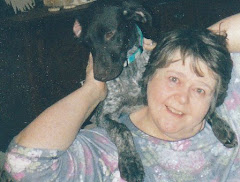



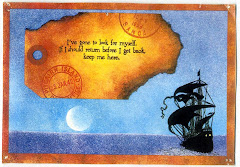














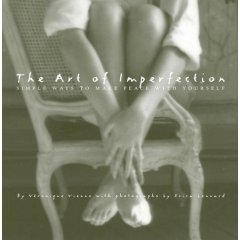


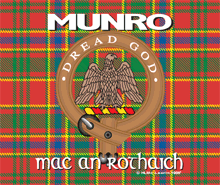
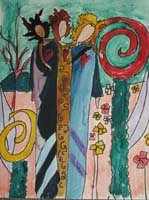
9 comments:
WOW Julie! Always interesting, always informative and always a pleasure to read. You should write a book!
Love and brightest blessings,
Sue xxx
I knew this would be a great blog to follow! Excellent dear. Blessings.
Fascinating as always, i'm probably a mix of Celt, pict and anglosaxon. It is sad cultures and races are lost, people don't like those that are different.
Amazing research - thanks for all the history - I could read your stuff forever.
Ancient cultures around the world honored the changing seasons,signs and symbols from animals,and were very knowledgable about herbs and plants. They respected earth. What interests me here is the creation myth is similar to that of Arizona natives.
I wonder if indigenous people on
other continents have stories
of emerging from underground water.
Or is this about the womb?
This is such an interesting post Julie, like you I have long had an interest in and have been aware of the similarities between the Celts and the American Indian tribes. I hadn't heard of the Mandan people, their story is a sad one and the world is poorer for their loss. They needn't necessarily have had contact with white Christian people to have deluge and virgin birth myths, these are both common in many ancient cultures and religions. The deluge myth especially is worldwide and appears in China, India, Australia, ancient Greece etc. As I said, a great post - keep them coming:)
Rowan,
Thank you so much for the information. I was not aware that the deluge myth was so widespread. I will change my post accordingly.
Julie
You are a WRITER!!! This is a fantastic post, filled with information and history and it shows your love of the Mandan people. I agree with Sue....you should write a book.
I loved reading this. We often put aside what we cannot deal with because it was wrong. I am what I call a Irish Indian. My great grandmother on my fathers side is Flathead, and on my mothers side is cherokee from My Grandfather who was born in the Oklamhoma Territory, and left with his little brother as a child.
It is so good of you to share this with us, sometimes we forget.
Your, Mary
Post a Comment